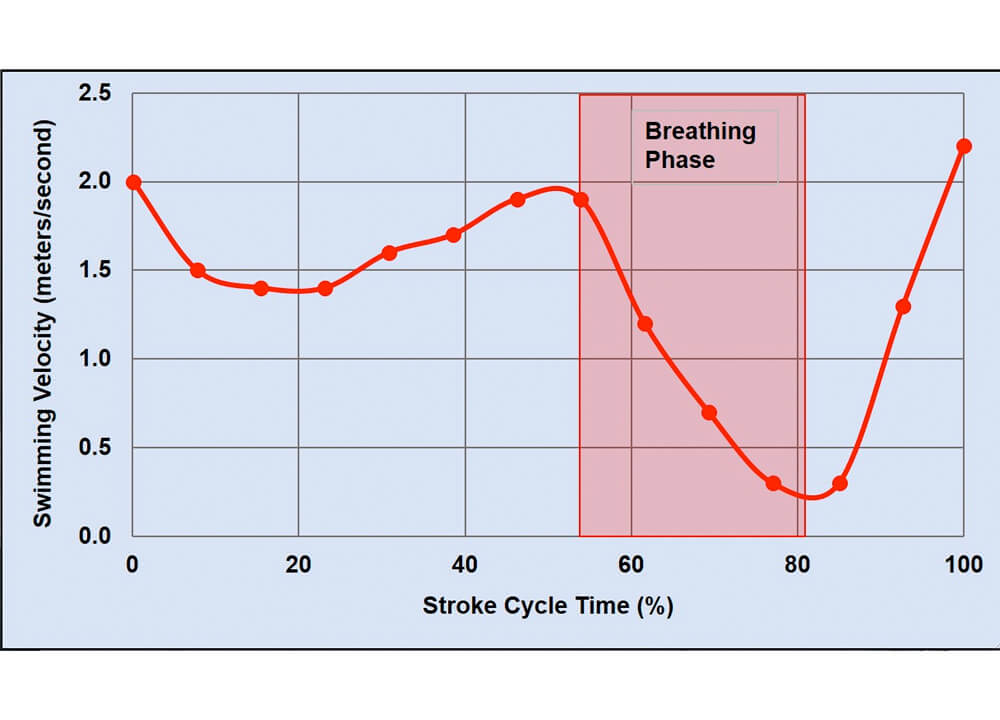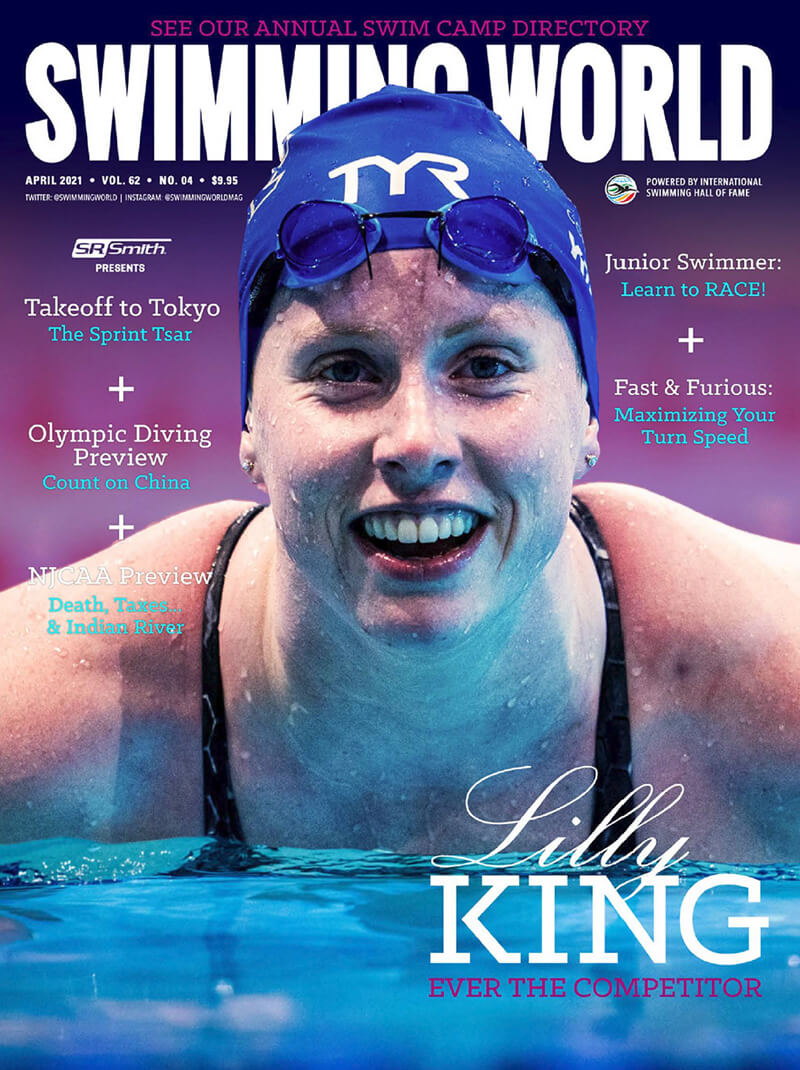Swimming World Presents – Swimming Technique Concepts – Applying Mechanical Principles To Improve Swimming Technique

The latest issue of Swimming World Magazine
is now available for download in the Swimming World Vault!
Non-Subscribers Can Download This Issue Here
Swimming Technique Concepts – Applying Mechanical Principles To Improve Swimming Technique
By Rod Havriluk
Many swimmers attempt to swim faster by modeling the technique of the fastest swimmers. Using champions as models is an archaic approach of painstakingly slow, trial-and-error that risks adopting technique limitations. A far superior approach is to apply mechanical principles that eliminate uncertainty and accelerate the skill-learning process. Unfortunately, modeling champions is well entrenched in swimming history.
EARLY HISTORY OF APPLYING SCIENCE
In his 1963 book, Coach Forbes Carlile’s chapters on “experiments” with style clearly documented the trial-and-error (i.e., non-scientific) process of improving swimming technique. However, his chapters on the technique of each of the four competitive strokes also included a number of technique elements that are clearly consistent with scientific principles. In spite of that, Carlile ultimately concluded that coaching technique “is more an art than a science,” stating that “we do not have hard and fast scientific principles to guide us.”
In contrast to Carlile, Coach Doc Counsilman applied many “hard and fast scientific principles” to improve technique in his 1968 book. The very first chapter was on “mechanical principles” and included buoyancy, Newton’s Law of Action-Reaction, the relationship of resistance and velocity, continuous source of propulsion, conservation of angular momentum and transfer of momentum. Each of these principles can be used to determine the most effective elements of swimming technique.
A SCIENTIFIC MODEL FOR PERFORMANCE
Doc’s application of the principles of physics to swimming is just as relevant, appropriate and accurate today as it was over a half century ago. As opposed to modeling the fastest swimmers, the application of mechanical principles has the advantage of certainty. The principles provide equations that definitively explain the relationships of component variables to allow the development of a performance model.
A “deterministic” model (Hay, 1983) begins with the relationship of the criterion measure (i.e., swimming velocity, SV) with its component variables (see Fig. 1). Swimming velocity is determined by the product of stroke length (SL) and stroke rate (SR). Adding variables to the model explains how a swimmer can benefit the most from both stroke length and stroke rate.
A CONVENTIONAL APPROACH TO BREASTSTROKE BREATHING
The rationale for using the traditional approach of modeling champions is that a swimmer with a world-record performance must have exceptional technique. Superficially, the logic makes sense. In reality, countless analyses have shown technique limitations in every top swimmer.
A classic and very noticeable example of champion performance is the breaststroke breathing position (see Fig. 2). Elite swimmers typically have the head, chest and upper arms above the water surface. Science, however, disputes that this breathing position is the most effective.
To access the full Swimming Technique Concepts complete with graphs and illustrations,
Check out the full issue of Swimming World’s April 2021 issue, click here to download now!
[PHOTO CREDIT: MINE KASAPOGLU/ISL]
Get Swimming World Magazine and Swimming World Biweekly FREE When You
Become A Member of the International Swimming Hall of Fame
New! 30 Day Membership to ISHOF AND Digital Swimming World Subscription for just $10 a month!
Want more? Get a 1 Year ISHOF Family Membership With Swimming World Print AND Digital Subscription Order Now!
Non-Subscribers can click here to download this issue for only $5.94
Swimming World April 2021 Issue
FEATURES
012 A PANDEMIC PERSPECTIVE FROM MASTERS SWIMMING
by Dan D’Addona
Masters swimmers maintain a connection to the sport they love as well as to their team and community. Because of the COVID-19 pandemic, that connection has been missing the past year, but they are ready to face the challenges that lie ahead.
017 DEATH, TAXES…AND INDIAN RIVER!
by Andy Ross
Indian River State College will be shooting for its 47th straight men’s and 39th consecutive women’s NJCAA team titles.
018 TAKEOFF TO TOKYO: SPRINT TSAR
by John Lohn
As Swimming World continues its “Takeoff to Tokyo” series, the opportunity to examine the career of Russia’s Alexander Popov—accomplishments and approach—is the chance to pay tribute to a man who might be the greatest sprinter the sport has ever seen.
021 COUNT ON CHINA
by Dan D’Addona
Based on the results of the last eight Olympics—and the most recent World Championships held two years ago—China would be a good bet to once again dominate the diving competition, July 23-Aug. 8, at the 2021 Games in Tokyo.
022 EVER THE COMPETITOR
by David Rieder
Five years after her public introduction to the world at the Rio Olympics, little has changed about Lilly King. She will still speak her mind, tell you how she really feels, and she’s still a winner, a dominant force in sprint breaststroke.
025 THE GREATEST OF THEIR GENERATION
by Bruce Wigo
The General Slocum steamship disaster in 1904, the tragedy that changed swimming history, had an impact on two of the greatest swimming heroes of all time, Johnny Weissmuller and Charles Robert Drew.
028 NUTRITION: FUELING FOR COMPETITION—THE “CHERRY ON TOP!”
by Dawn Weatherwax
Athletes spend hours upon hours training. It is now time to put the sports nutrition piece all together when it matters most. A big part of the plan is to know what, when and how much to eat and drink before, during and after the event.
COACHING
014 FAST AND FURIOUS
by Michael J. Stott
College coaches Braden Holloway (NC State), Todd DeSorbo (Virginia), Matt Kredich (Tennessee) and Jessen Book (Kenyon) share their ideas on how they help their swimmers maximize turn speed.
038 SWIMMING TECHNIQUE CONCEPTS: APPLYING MECHANICAL PRINCIPLES TO IMPROVE SWIMMING TECHNIQUE
by Rod Havriluk
Many swimmers attempt to swim faster by modeling the technique of the fastest swimmers. Using champions as models is an archaic approach of painstakingly slow, trial-and-error that risks adopting technique limitations. A far superior approach is to apply mechanical principles that eliminate uncertainty and accelerate the skill-learning process.
043 Q&A WITH COACH MEGAN OESTING
by Michael J. Stott
044 HOW THEY TRAIN DIGGORY DILLINGHAM
by Michael J. Stott
TRAINING
037 DRYSIDE TRAINING: PUSHING POWER
by J.R. Rosania
JUNIOR SWIMMER
040 GOLDMINDS: LEARN HOW TO BE A RACER
by Wayne Goldsmith
It’s important to learn how to swim your event in such a way that you can perform to your potential in every possible racing situation, including different strategies for heats, semifinals and finals.
047 UP & COMERS: DANIEL DIEHL
by Shoshanna Rutemiller
COLUMNS & SPECIAL SECTIONS
008 A VOICE FOR THE SPORT
011 DID YOU KNOW: ABOUT THE STORY OF THE AUMAKUA?
030 2021 SWIM CAMP DIRECTORY
046 DADS ON DECK: BRENT BILQUIST
048 GUTTERTALK
049 PARTING SHOT
Swimming World is now partnered with the International Swimming Hall of Fame. To find out more, visit us at ishof.org




